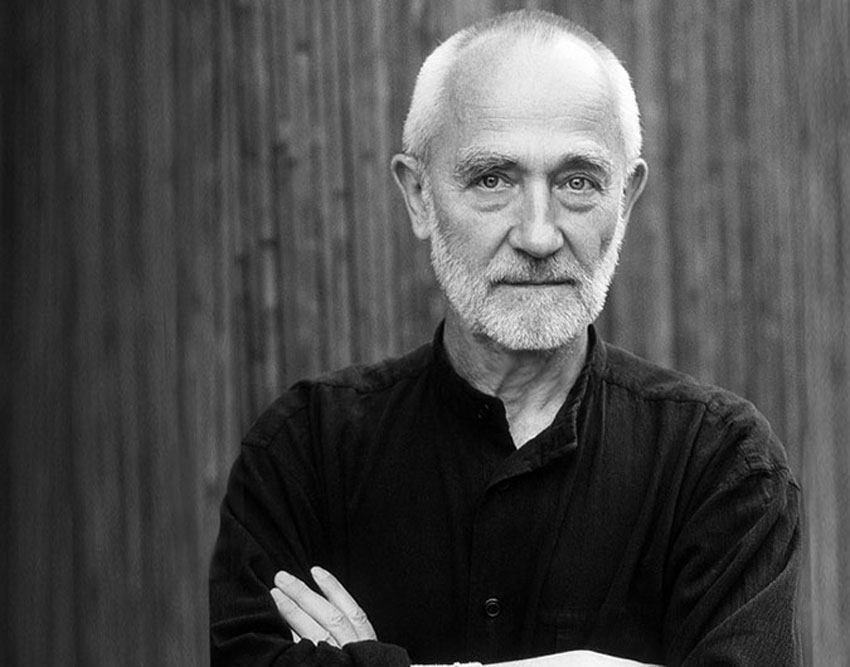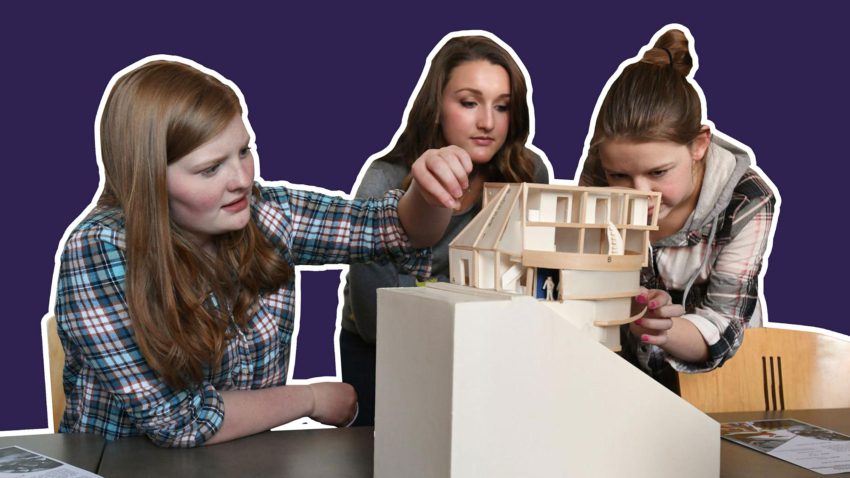The Guest Editor for this special article dedicated to Peter Zumthor is Abed from ArchAnime, a team of architects and designers who provide short, fun animated YouTube videos that simplify architecture books and theories to inspire their audience’s curiosity. If you have not checked their Youtube channel yet, we highly recommended it.
Zumthor’s thoughts can be summarized in the following when we visit a building; we don’t only remember the building itself; we remember what we felt when we were walking in that building. And that’s what makes us want to visit the building once again. Our hormonal response craves the feeling that rose inside us the moment we stepped inside the building.
– ArchAnime Editors
How to Start Thinking Like an Architect?
In the first lecture of his book “Thinking Architecture,” Peter Zumthor, the notable Swiss architect, gave us a glimpse of his way of thinking about architecture.
He vouched that Architecture is a form of art, just like music or painting. Projects shouldn’t be only limited to the logical and analytical part of thinking. It should expand outside of the zone where feelings and emotions are present; they play a key role in our architecture experience.
1. Architecture of Our Past and Experiences
Zumthor’s thoughts can be summarized in the following when we visit a building; we don’t only remember the building itself; we remember what we felt when we were walking in that building. And that’s what makes us want to visit the building once again. Our hormonal response craves the feeling that rose inside us the moment we stepped inside the building.
In his philosophy, Architecture is not a solid material. With our senses and the way our body responds to the sound, the smell, the color of a single material, we create architecture. If architecture was a car, our emotions and how we respond to it is the engine. There is no architecture without us.
Each person goes through a different set of emotional memories once a connection with an architectural building or a landscape. That said, architectural experiences can be infinite. Zumthor believed that it is not an analytical experience at all; it is an emotional experience.
The Pritzker Architecture Prize winner acknowledges the impact of feelings on his work. These subjective desires interfere with the design process’s objective aspect, that interference of feelings and desires requests from the architect to have a form.
To find your way as an architect, all you have to do first is look at your subjective experiences and allow your emotional memories to surface and guide your designs. We are a reflection of our experiences, after all.
2. Common Sense
After embracing our subjective nature, the next big idea is to understand that architecture’s work should also be founded on common sense derived from our observations. The concept of studying our world, surrounding, social orders and then coming up with our own sense of things is true and tested.
In his work, Zumthor says that after he observes the appearance of the world, he tries to:
- Enhance what seems to be valuable
- Correct what is disturbing
- Create what feels missing
We tend to solve architectural issues with a vast knowledge of architectural history during architectural education years. As practicing architects, we have to understand that it is not always a linear path. We might have to let go of the academic knowledge to embrace our designer nature, which is basically our own private and personal memories and experiences.
We have to let the people who see our designs actually know us and recognize our true selves even centuries after passing. Architecture is a way to be remembered and acknowledged forever.
3. Construction
Construction is the art of making a meaningful whole out of many parts using the proper materials. We should gather knowledge of how things are built. Buildings consist of several parts joined together, which means that these joints’ quality determines the building’s quality.
Following his fellow Swiss architect, Le Corbusier, and his 2nd reminder to architects to master the play of architectural surfaces, Zumthor also focused on minimizing the impact of joints in favor of the overall form. Every join should reinforce the total presence, and our eyes should not be interrupted with the smaller parts.
As architects, we are faced with the challenge of filling out the whole with innumerable details. Architects must look for rational construction solutions for the edges and joints where surfaces meet.
This attention to the details will set the tone of the design.
Naturally, we should understand that materials themselves are not poetic, but if the architect creates a meaningful context, they will assume a poetic quality.
4. Elements that make an Architect Successful
Every building is built for a specific use, in a specific place, for a specific society, and it has nothing to do with style. Some buildings seem to be a self-evident part of their surroundings as if they meant to be where they are
To have a dialogue with it surrounding each building has 2 spatial possibilities
The first one is to have a closed architectural body that isolates the space within itself
The second is to open its body to connect with its surrounding
Zumthor starts his designs with simple volumes and spatial diagrams to understand how they define or separate an interior space area from its surroundings or how it embraces the infinite continuum. Architecture is exposed to life and should be sensitive to it.
5. Role of Teachers
Teachers are or at least should be there to help the students find their own answers.
As mentioned above, to Zumthor, even if the finished work of architecture seems objective in nature, the architectural design process is highly subjective.
So, architecture research is about asking ourselves questions and finding our own answers and solutions.
6. Classic Order of Design
A good architectural design is both sensuous and intelligent. That means that the student should be trained in both emotional and logical means of perception.
Now that we have established that to study architecture, a student should first learn how to ask oneself and learn to perceive the world. And since architecture is a mirror to our personal experiences, the questions that arise from each student result from neural connections of a set of emotional memories. And since we don’t share the same memories, each student has his or her set of questions that forge the space for discussions and debates. Questions like:
- What was it about that certain house or town that touched us or impressed us?
- What was the room like?
- What was the smell in the air?
- How did our footsteps sound?
- Did it feel narrow? Wide? Empty?
The answers to these questions will form our architectural self-biography and images to use when we design. Students should also experiment and understand the use, fabrication, and properties of each material, wood, stone, textile, granite, raw metal, concrete, and asphalt.
- How do they wear and tear?
- How will they react to weather conditions, heat, water, moister?
As a mindset, we have to engrave in ourselves that architecture is a concrete matter and not abstract, just like we plan a symphony with music notes on a piece of paper. A symphony will only come to be when it’s played.
Architecture designs are like these notes, and as we said earlier, if architecture is a car, our emotions and response are the engines.
The classic order of design studies is 1) Ideas, 2) Plan, and 3) Concrete object. However, to truly grasp architecture, we should flip this order. We should start with the concrete object, then scale it into the plan.
Make models out of real materials. Observe it, reflect on it, and figure out its logical representation.
To sum this up,
Questions, research, experiences, and experimentation with materials will create images in our heads and trigger different emotions. We design with those images, and they influence our architectural character.
In the images, we should be able to see the whole of the project.
We should not see the exact details of these connections, and for that, we should use our ability of invention and design to figure out each different detail.
Producing inner images is a natural process for everyone, and to learn architecture, all you have to do is recognize it and build an emotional connection with it. To be an architect is to fall in love with every project you are responsible for achieving.
The following video represents the second part of the article:
[cite]






It’s a pity you don’t have a donate button! I’d definitely donate
to this fantastic blog! I suppose for now i’ll settle for
bookmarking and adding your RSS feed to my Google
account. I look forward to new updates and will share this site with my Facebook group.
Chat soon!
We hoped you liked the article! -Abed